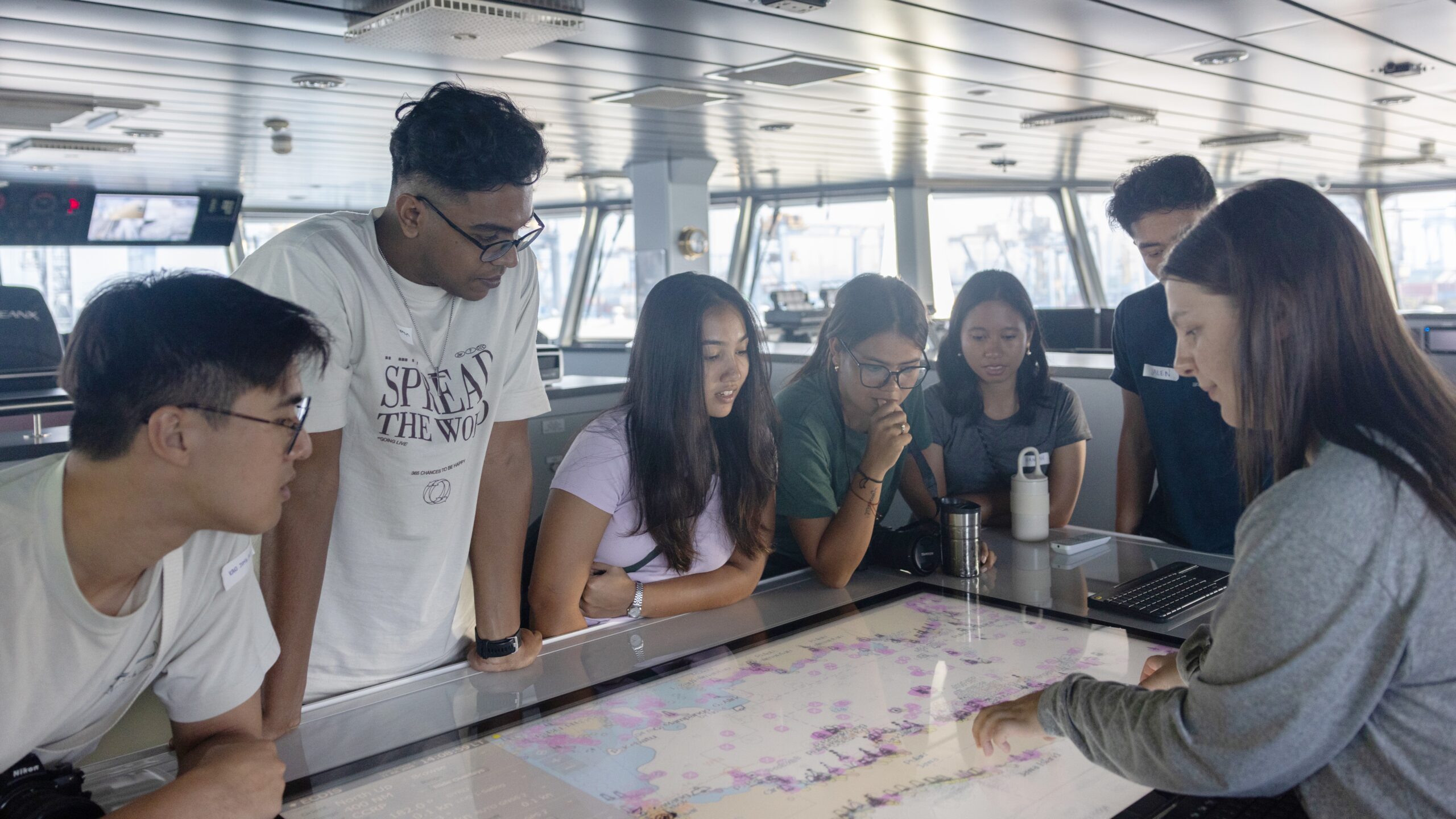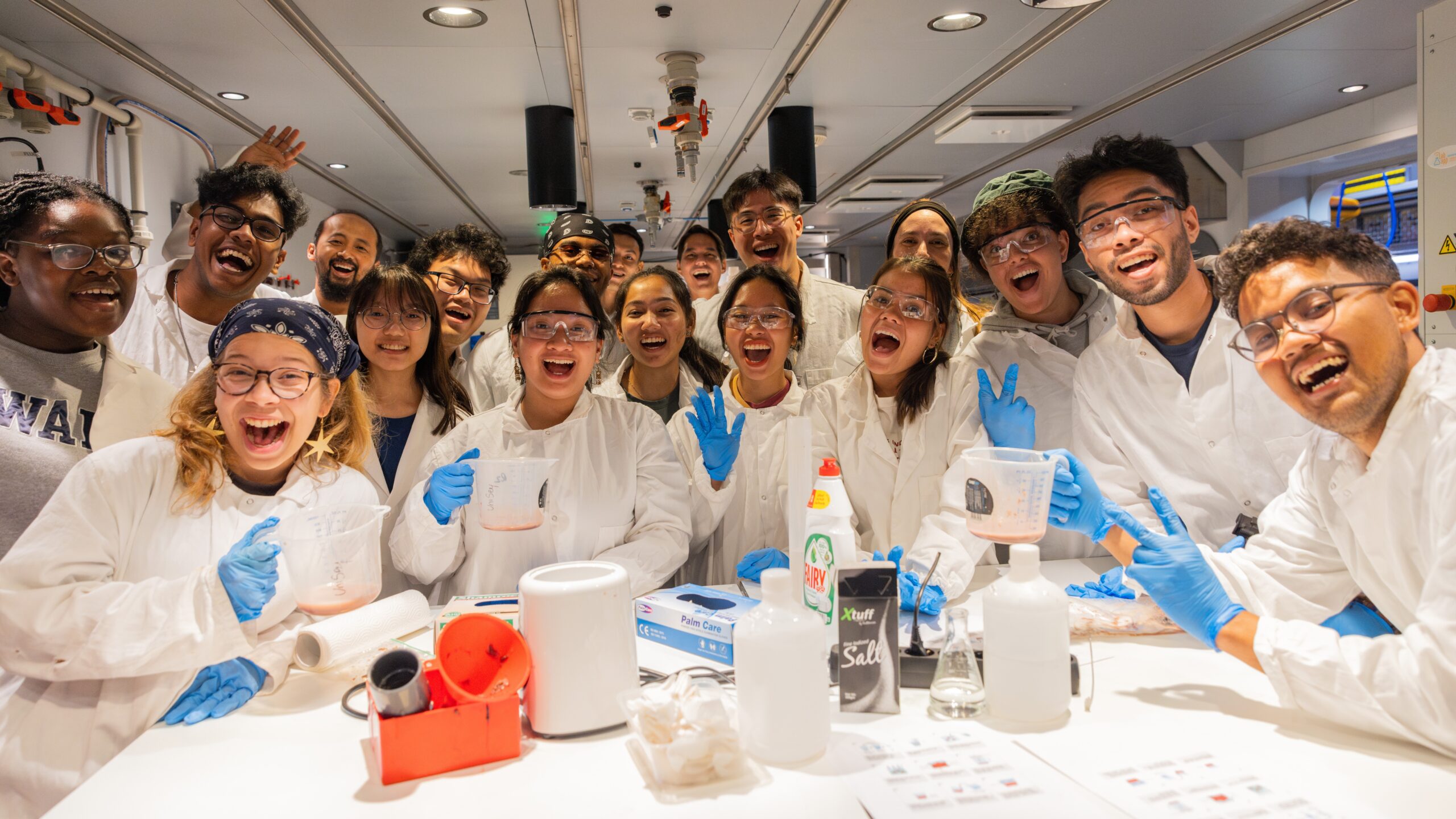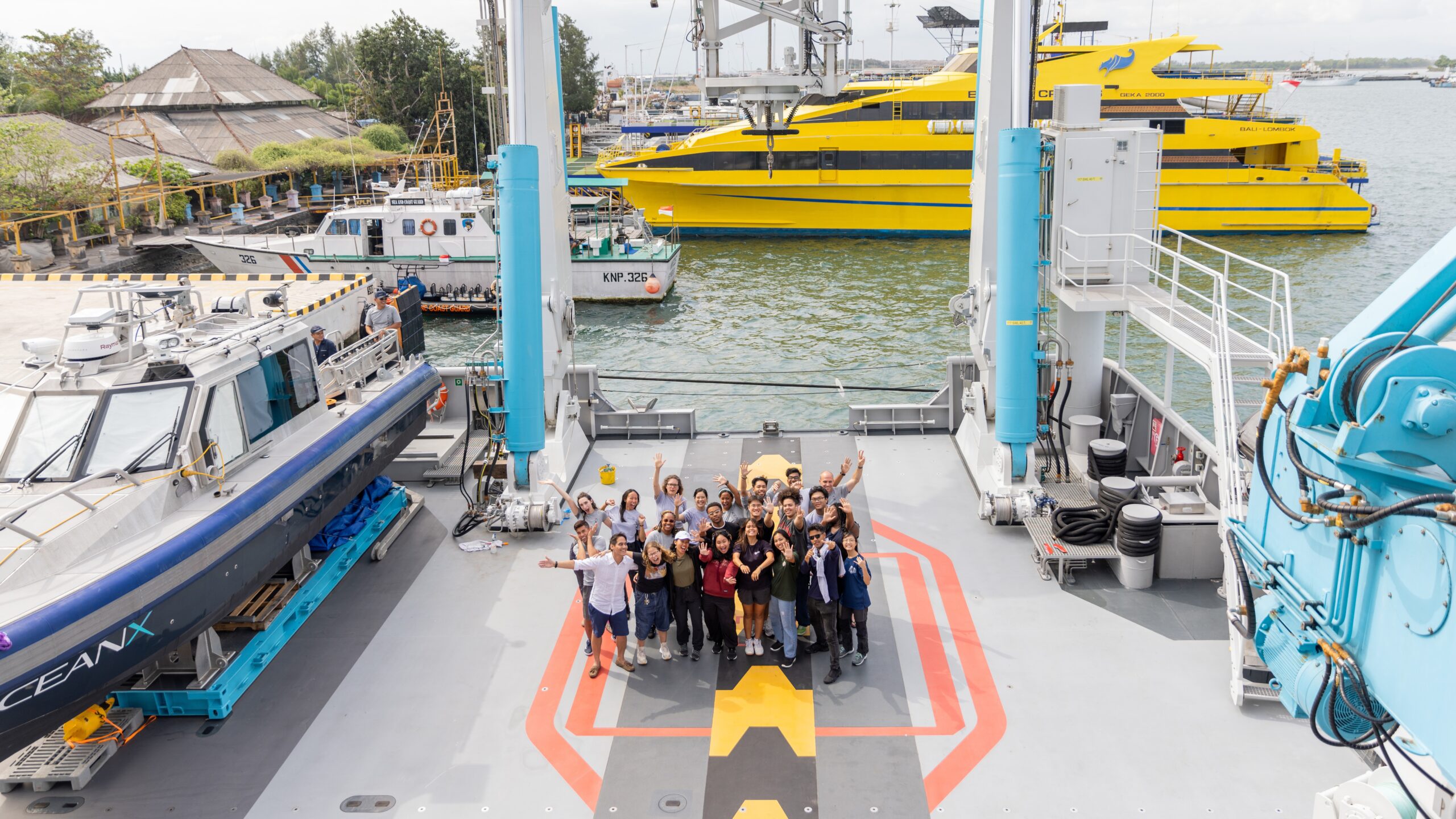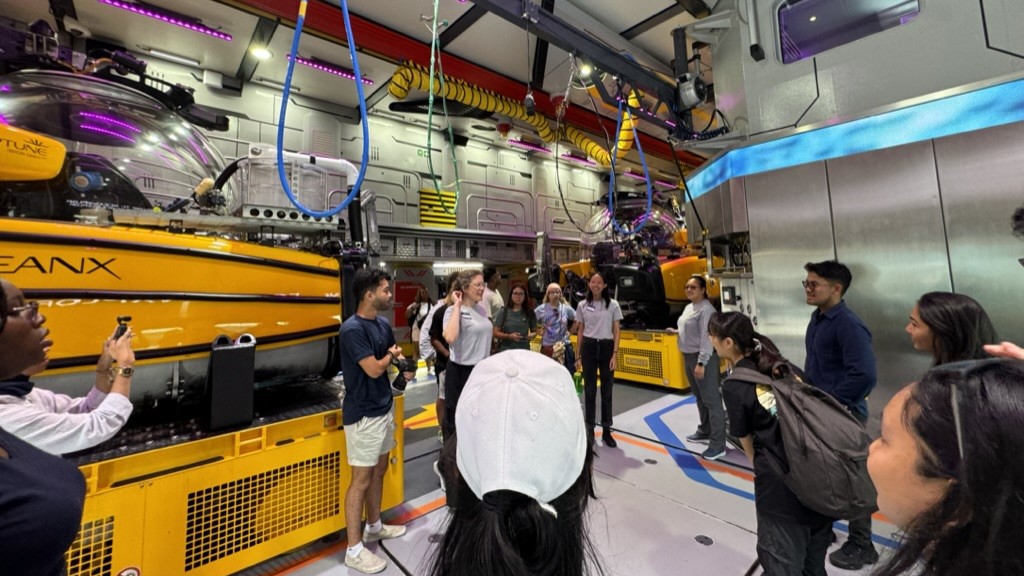Unearthing the mysteries of the ocean’s depths: NUS students’ adventure aboard the OceanXplorer
August 26, 2024

Two NUS students recently enjoyed a once-in-a-lifetime experience of learning about ocean exploration and living on board a state-of-the-art research craft. Ng Kao Jing, a second-year student from the NUS Environmental Studies Programme, and Rachel Ong, a third-year student majoring in Psychology, were among the 14 young explorers picked from thousands of applications around the world to participate in the OceanX Education Young Explorers Program (YEP), which was held from 10 to 15 July 2024.
Kao Jing and Rachel spent five days on board the OceanXplorer, an advanced research vessel which helps to study reefs and deep-sea areas, sailing from Jakarta to Bali. The voyage offers college students the opportunity to learn from experienced scientists and explore the ocean through workshops, hands-on activities and independent study on board.
Answering the call to deep-sea adventure
YEP selects students aged 18 to 22 from across the globe for a week-long voyage of experiential learning aboard the OceanXplorer. Participants will apply online where they will need to provide a brief written response and submit a video demonstrating their passion for natural science through ocean leadership and conservation, marine operations, or creative storytelling. Shortlisted applicants will be invited to participate in an interview.
The expedition in July 2024 welcomed its first international batch of young explorers. Kao Jing and Rachel were joined by 12 other young explorers from countries such as Indonesia, the Philippines, the United States of America and Singapore, bringing with them a diverse range of expertise, such as screenwriting, ocean science, and geomatics engineering.
Known globally as the pinnacle of advanced deep-sea ocean exploration research vessels, the OceanXplorer was originally used for oil exploration. It underwent a significant transformation in 2010, with further updates in 2020, and is now equipped with cutting-edge research capabilities as well as media and technology.
Capable of exploring the most unreachable places on Earth (up to 6000m depth), the OceanXplorer hosts an array of sophisticated equipment, including submersibles and an ROV (Remotely Operated Vehicle), enabling scientists to study deep-sea marine life in their natural habitat. Additionally, it includes facilities like a helicopter for research deployment and filming, wet and dry labs for scientific endeavours, a dedicated dive centre and a media hub.
A day in the life of a young ocean explorer
Life aboard the OceanXplorer was a whirlwind of learning and adventure. The young explorers participated in a variety of activities — from classroom seminars, scientific laboratory work, job shadowing, and even snorkelling at the famous USAT Liberty Shipwreck in Bali! The holistic curriculum put together by YEP offers enriching experiences where participants developed knowledge and competency in both media and science.
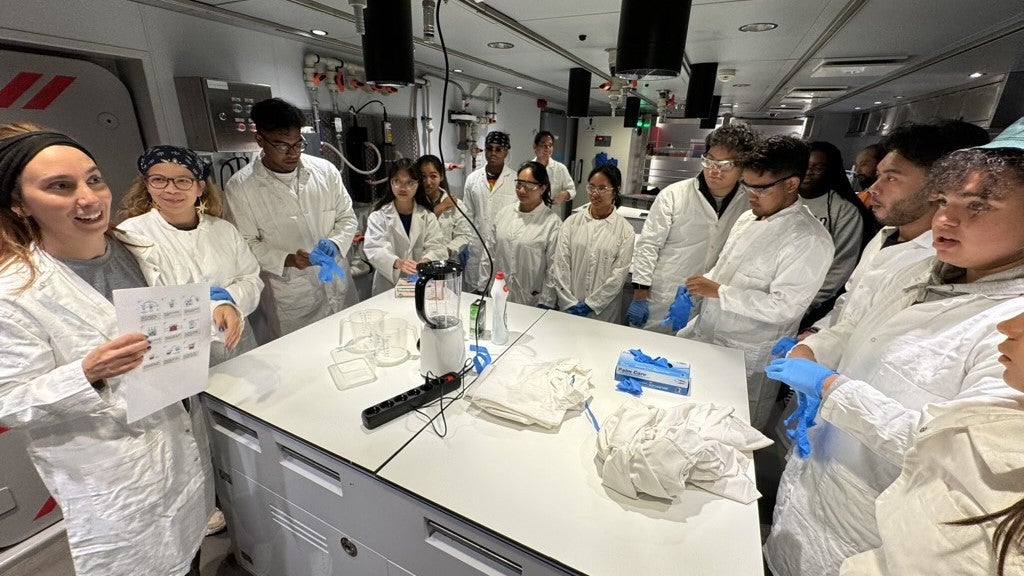
The young explorers also attended seminars on media storytelling, eDNA (environmental DNA), ocean justice, as well as oceanography and communications at sea. Held in a roundtable format, the seminars were eye-opening and informative, facilitating many insightful discussions.
Kao Jing remarked, “One memorable seminar activity was the extraction of DNA from a fish. The hands-on experiment helped us understand the procedure of DNA data collection, which involves extraction, sampling, and sequencing. It’s interesting to know that such DNA data has enabled OceanX scientists to uncover new species of deep-sea creatures.”
“We also conducted daily live streams on YouTube in small groups, discussing topics such as science and media, as well as the importance of ocean education. It was very exciting to see our friends, family, and even strangers from around the world tune in and comment on our live streams!” added Rachel.
Afternoons were reserved for job shadowing, where young explorers could shadow the crew on the vessel and carry out various shipboard roles in areas such as submersibles, bridge, kitchen, deck operations, media, wet and dry labs, and the scuba centre.
Kao Jing chose to shadow the bridge team, where he learned about navigation, operations and communications. He even had the exhilarating experience of steering the ship! Rachel, on the other hand, was eager to dive into a scientific discipline and shadow the Science Technology Officer. She learned to use the vessel’s CTD (conductivity, temperature, and depth), a vital oceanographic tool for understanding the physical properties of seawater.
Both certified divers, Kao Jing and Rachel also shadowed the vessel’s Dive Safety Officer, who eagerly imparted his knowledge on the decompression chamber onboard and demonstrated the vessel’s advanced scuba diving equipment.
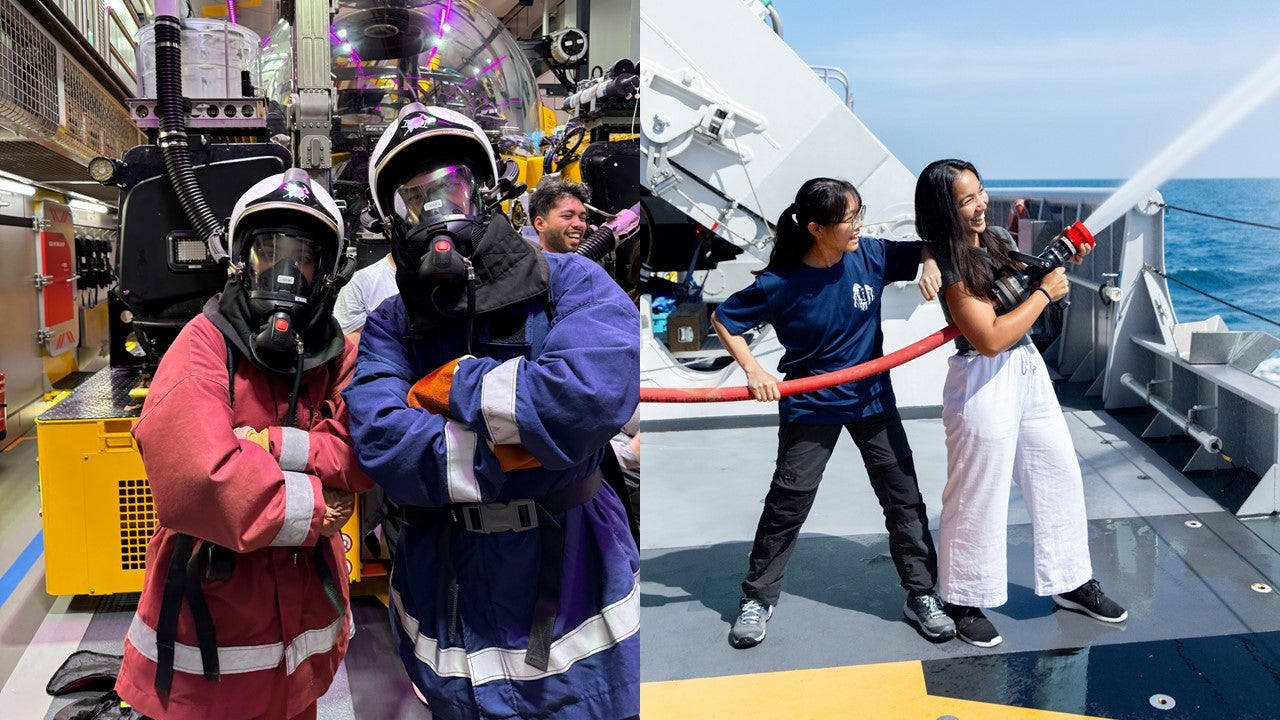
On top of academic seminars and job shadowing, the young explorers also acquired the most crucial survival skill aboard a vessel – firefighting. The surprise activity started off with a sudden alarm, catching the young explorers off guard. Under their mentors’ guidance, they rushed to don firefighting suits, learned how to breathe from oxygen tanks and operate a firehose. For Kao Jing and Rachel, that was one of the many thrilling and unforgettable lessons in the programme.
Rachel commented, “Our batch of young explorers was very enthusiastic and inquisitive. Everyone came from diverse backgrounds and yet we shared a common love for the ocean - this allowed us to build a strong rapport with one another easily. The passion of the crew and education team for their work also inspired Kao Jing and me to learn and contribute as much as we could.”
Kao Jing elaborated, “The YEP was a transformative adventure for both of us. It reignited our passion for ocean education and conservation – in line with OceanX’s vision of ‘explore the ocean and bring it back to the world’. The programme has empowered us to advocate for the wonders of the ocean and the threats our oceans are facing, and it has also helped us foster a deeper connection and understanding of our seas. We are now better equipped to protect our precious marine environment!”
Check out more photos below! (Photos: OceanX, Ng Kao Jing, and Rachel Ong)
Source: NUS News




